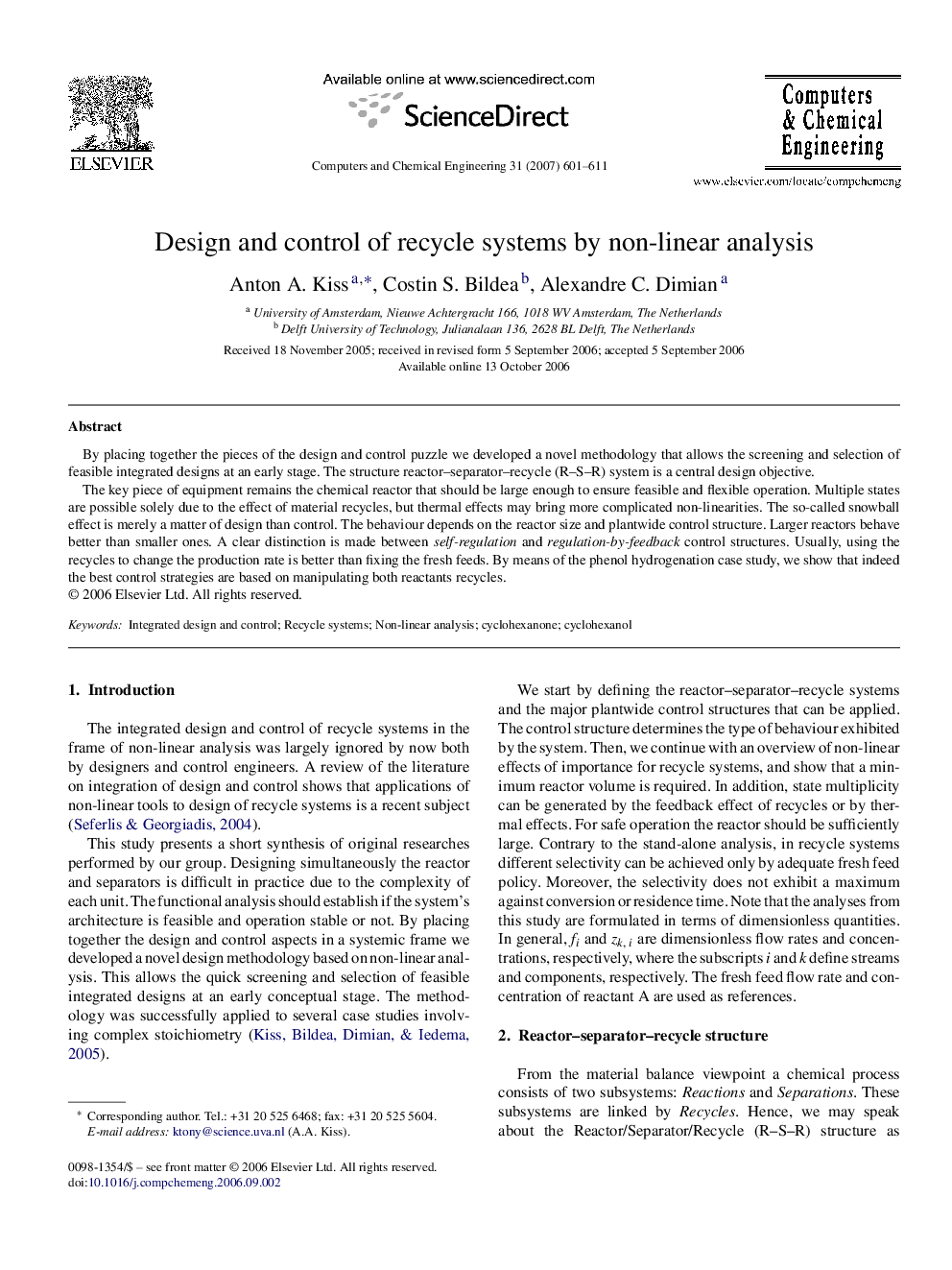| Article ID | Journal | Published Year | Pages | File Type |
|---|---|---|---|---|
| 173842 | Computers & Chemical Engineering | 2007 | 11 Pages |
By placing together the pieces of the design and control puzzle we developed a novel methodology that allows the screening and selection of feasible integrated designs at an early stage. The structure reactor–separator–recycle (R–S–R) system is a central design objective.The key piece of equipment remains the chemical reactor that should be large enough to ensure feasible and flexible operation. Multiple states are possible solely due to the effect of material recycles, but thermal effects may bring more complicated non-linearities. The so-called snowball effect is merely a matter of design than control. The behaviour depends on the reactor size and plantwide control structure. Larger reactors behave better than smaller ones. A clear distinction is made between self-regulation and regulation-by-feedback control structures. Usually, using the recycles to change the production rate is better than fixing the fresh feeds. By means of the phenol hydrogenation case study, we show that indeed the best control strategies are based on manipulating both reactants recycles.
